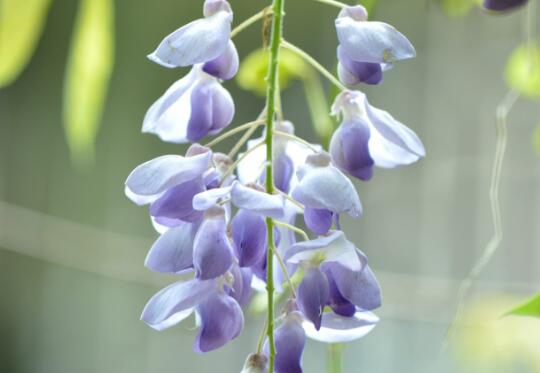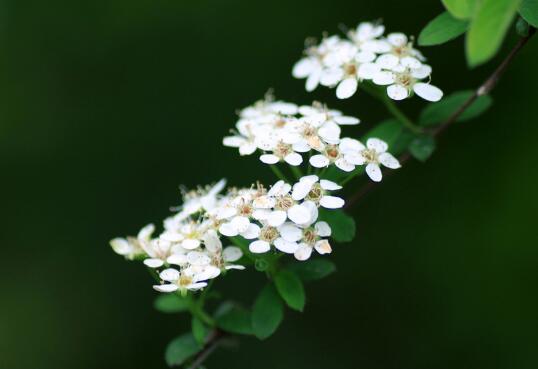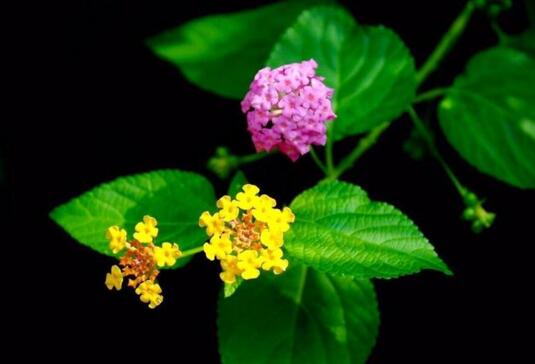Is wisteria poisonous? can wisteria be cultivated indoors / poisonous but can be raised indoors?
Wisteria is a kind of highly ornamental flower, which can be seen in many gardens in our country, and because of its high ornamental, many people want to raise this kind of plant at home, but many plants are poisonous to a certain extent. so when breeding, we should be clear about whether wisteria is poisonous. Can wisteria be raised indoors? Next, the editor will take you to learn about it.
Is the wisteria poisonous?

About whether wisteria is poisonous, in fact, there are, its seeds are toxic, if accidentally eaten, it will cause vomiting, diarrhea and other symptoms to the human body. Although its seeds are poisonous, the plant does no harm to the human body and has a lot of benefits. As for what are they? Let's take a look.
Can pregnant women eat wisteria? it is not recommended.
After pregnancy, women's physical skills will change greatly. Can pregnant women eat wisteria? The advice of the editor here is that it is best not to, after all, wisteria is toxic to a certain extent, for the sake of children and their own health, pregnant women had better not eat wisteria, so as not to cause some unnecessary trouble.
Can wisteria be cultured indoors? yes.
As for whether wisteria can be cultivated indoors, the answer is yes. Although the seeds of wisteria are toxic to a certain extent, the plants are non-toxic and have a lot of benefits to people, so there is no problem with breeding indoors. However, if you keep it indoors, it is best to keep it on the windowsill so that it can receive enough light.
Fourth, the advantages of wisteria flowers raised indoors
1. Beautify the indoor environment
Wisteria flower is highly ornamental, its flower posture is beautiful, it is born with a fresh and elegant temperament, if you raise a plant at home, it will greatly improve the indoor environment, and it will also become an indispensable landscape at home.
two。 Purify indoor air
Wisteria is a kind of natural air purifier, which has natural resistance to harmful gases such as sulfur dioxide and hydrogen oxide, and has a certain adsorption effect on dust in the air. and it also has oxygen, cooling, dust reduction, noise and other beneficial effects on people's life, it can make people's living environment healthier.
Do not breed poisonous flowers indoors. Do you keep these flowers in your home?
Nocturnal incense stops photosynthesis at night and releases a large amount of carbon dioxide, which is harmful to human health. Long-term display in the bedroom or living room, will make people dizzy, cough, and even asthma, insomnia.
The whole plant of Phyllostachys pubescens is poisonous and mainly contains andrographoline, which can cause systemic spasm, coma and other symptoms.
The whole plant of poinsettia is poisonous, and the white milk in the stems and leaves can cause allergic reactions in the human body, resulting in skin redness, swelling, heat and pain, nausea, vomiting, diarrhea and other toxic symptoms, and even death.
The toxic parts of calla lilies are flowers, which contain a lot of calcium oxalate crystals and alkaloids, so do not touch flower stem incisions and accidentally eat them, so as to prevent toxic symptoms such as coma caused by toxic population. Generally speaking, as long as calla lilies are not destroyed, they will not cause great harm to the human body, but families should be careful to keep them.
The whole plant of mimosa is poisonous and contains flavonoids, mimosine and other compounds. the leaves of mimosa contain contractile proteins similar to myosin. If people accidentally eat mimosa, their hair and eyebrows may suddenly fall off.
Wisteria's seeds, stems and skins are poisonous, and the seeds contain monocrotaline, which can cause vomiting, diarrhea, mouth and nosebleed, chills in hands and feet, and even shock and death.
Common poisonous flowers which flowers are poisonous and cannot be raised
Common poisonous flowers which flowers are poisonous and cannot be raised
Some flowers are beautiful in appearance or some are brightly colored, these characteristics make us love them. However, florists must understand that some flowers are poisonous, so pay a little attention to them and take care of them. Make it easy and fun to grow flowers.
1. Oleander
The stems, leaves, flowers and fragrance of this kind of flowers are poisonous. If you smell it for a long time, it will make people drowsy and intellectual decline. The milky white juice it secretes will be poisoned if it is eaten by people.
2. Poinsettia
The whole plant is poisonous, especially the white juice in the stems and leaves can irritate the skin and cause allergic reactions. If you accidentally eat stems and leaves, there will be the risk of poisoning and death.
3. Yu Mei
The whole plant is poisonous and contains toxic alkaloids, especially the fruit is the most toxic, if eaten by mistake, it will cause central nervous system poisoning, serious may also lead to human life-threatening.
4. Nantianzhu
The whole plant is poisonous and can cause systemic convulsions, convulsions, coma and other toxic symptoms after accidental ingestion.
5. Five-colored plum
Flowers and leaves are poisonous. If eaten by mistake, it will cause diarrhea, fever and other symptoms.
6. Tulips
The flower contains poisonous alkaloid, stay next to it for 2-3 hours, there will be symptoms of dizziness poisoning, serious will also lead to hair loss, so it is not suitable to plant this kind of flower at home.
7. Azalea
Yellow rhododendron plants and flowers, white rhododendron flowers all contain toxins, accidental eating will cause poisoning, serious will endanger human health.
8. Daffodils
Home planting is generally no problem, but do not break its bulb, which contains Latin toxin, which can cause vomiting and enteritis; the sap of leaves and flowers can make the skin red and swollen, especially be careful not to put this juice into the eyes, it can lead to blindness.
9. Mimosa
Contains toxins, contact too much, will cause sparse eyebrows, hair yellowing and even shedding. So don't fiddle with it too much with your fingers.
10. Wisteria
Its seeds, stems and skins are all poisonous, which can cause vomiting, diarrhea, mouth and nose bleeding, chills in hands and feet, and even shock and death.
11. Cactus
Plant thorns contain poisonous juice, after the human body is stabbed will cause skin redness, swelling, pain, itching and other allergic symptoms, leading to the whole body uncomfortable, restless.
12. Bachelor tree
The white juice from the broken stem can make the skin red and swollen, and mistakenly into the eyes can cause blindness.
13. Five-colored plum
Flowers and leaves are poisonous, and accidental eating can cause diarrhea and fever.
14. Evergreen flowers and leaves
Flowers and leaves contain oxalic acid and asparin, which will straighten the mouth, throat, esophagus, intestines and stomach, and even damage the vocal cords, causing people to become dumb.
Here we briefly introduce some flowers that contain toxins, and of course there are many, so before we buy flowers, we should know whether they are poisonous and how to avoid them. Like some poisoned flowers caused by accidental ingestion, if there are children at home, try not to buy or put the flowers out of the reach of the children. If some flowers are poisonous, try not to buy them, or put them in a place far away from people and well ventilated.
- Prev

What time does the pearl plum blossom? The flowering period of the pearl plum is maintained/July-August. The flowering period is 2 months.
Pearl plum is a common plant in the world, with a high ornamental, but when it comes to its most ornamental, it must be flowering, so when does pearl plum bloom? What do you need to do to maintain the flowering period of pearl plum? The following small series takes everyone to understand
- Next

How long is the flowering period of the five-color plum? what if the five-color plum does not blossom / four tricks to make the flowering period longer
As we all know, the five-color plum blossom language is very beautiful, it has a cheerful, lively meaning, but also symbolizes family harmony, so it is loved by people. So in what season do five-colored plums blossom? How long is the flowering period of five-colored plum? What if the five-colored plum does not blossom? The editor will tell you the answer.
Related
- Fuxing push coffee new agricultural production and marketing class: lack of small-scale processing plants
- Jujube rice field leisure farm deep ploughing Yilan for five years to create a space for organic food and play
- Nongyu Farm-A trial of organic papaya for brave women with advanced technology
- Four points for attention in the prevention and control of diseases and insect pests of edible fungi
- How to add nutrient solution to Edible Fungi
- Is there any good way to control edible fungus mites?
- Open Inoculation Technology of Edible Fungi
- Is there any clever way to use fertilizer for edible fungus in winter?
- What agents are used to kill the pathogens of edible fungi in the mushroom shed?
- Rapid drying of Edible Fungi

